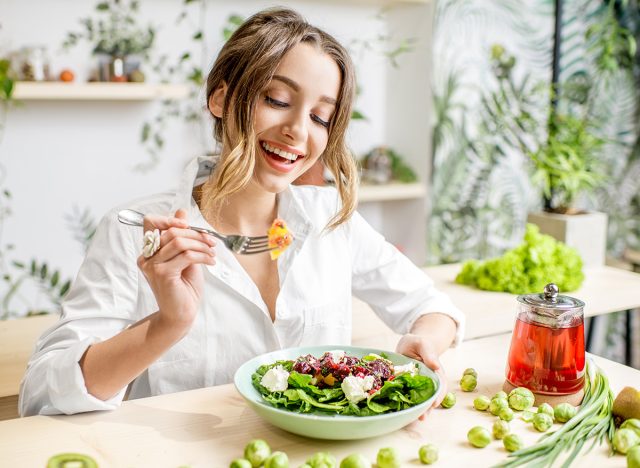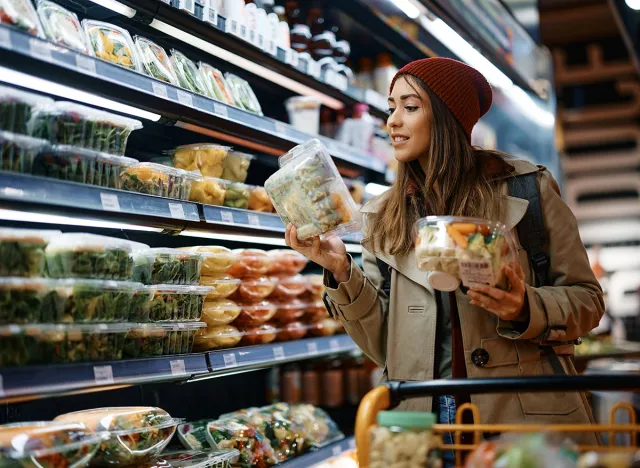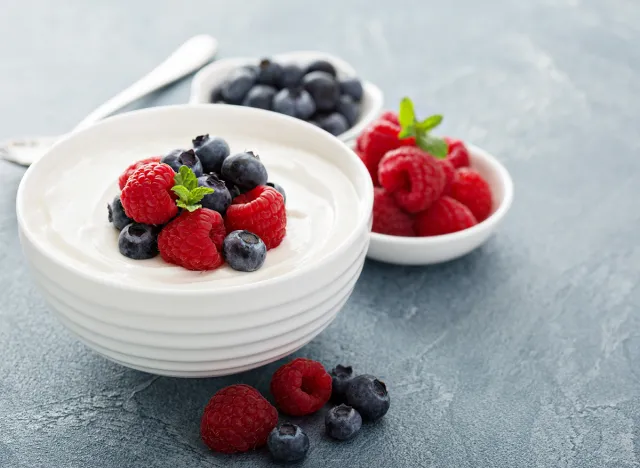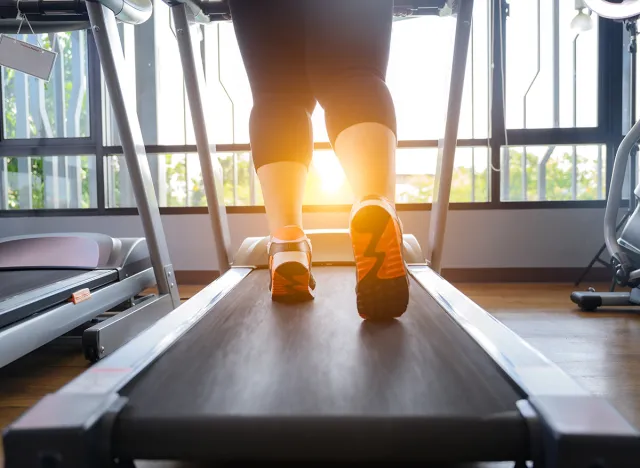10 Tips For Effective Fat Loss Without Extreme Dieting

To really nail your fat loss goals, let's get one thing straight: You need to look at it from all angles. Why? True progress lies in adopting a holistic approach to truly target body fat. And how do you do that? Ensuring you consume just enough calories to fuel your body without excess, prioritizing protein intake, managing stress from both work and personal life, getting sufficient sleep, and engaging in regular, and varied exercises are all crucial steps.
Moreover, keeping tabs on your health through regular lab work – checking on sex hormones, thyroid function, stress levels, and signs of insulin resistance – and having ongoing discussions with your healthcare provider about these results, play a significant role in your success.
Many of the following tips focus on nutrition, but it's essential to remember the other pieces that your body needs for a multifaceted fat loss approach. And remember, change doesn't have to happen all at once. Start with small, manageable adjustments and build from there, gradually incorporating more comprehensive changes to your lifestyle.
Smart Hydration for Hunger Management

What & Why: Proper hydration is a cornerstone of health, the body is mostly made of water, being adequately hydrated ensures you have optimal brain function, physical performance, prevents mistaking thirst for hunger, acts as an appetite suppressant, and is great to maintain overall health.
How to Approach: Make it a ritual to start each day with a glass of water. Prior to each meal, drink another glass to foster fullness and hydration.
Common Pitfalls: Overlooking water intake due to a preference for flavored drinks or simply forgetting.
Solutions: Utilize reminder apps or stylish, eco-friendly water bottles with hourly markings to keep hydration top of mind. For added enjoyment experiment with natural infusions (lemon, melon, cucumber, mint, etc) to satisfy cravings for flavored beverages without the added sugar.
High Water Content Foods for Fullness and Flavor

What & Why: Foods high in water content but low in calories—such as fresh vegetables, fruits, and broth-based soups—offer a strategy to enjoy larger, more satisfying meals without overloading on calories, assisting in weight control, thus fat loss if all variables addressed, and nutrient intake.
How to Approach: Integrate a salad with your veggies and fruits of choice or a comforting bowl of vegetable soup into your daily meals to increase volume and nutritional value without the calorie count climbing too high.
Common Pitfalls: Relying too heavily on these foods, potentially missing out on essential nutrients found in more calorie-dense foods.
Solutions: Create balanced meals that include a variety of food groups, ensuring a rich intake of necessary nutrients. When craving comfort foods, creatively adapt your favorites, such as adding extra vegetables to a homemade pizza or burger to boost fiber and reduce calories.
Related: This Plan Is How to Lose 5 Percent Body Fat In 2 Weeks
Mindful Eating for Enhanced Enjoyment and Satisfaction

What & Why: Slowing down and savoring your meals without distractions allows your body to properly signal fullness, reducing the risk of overeating and increasing meal satisfaction.
How to Approach: Commit to fully focusing on at least one meal a day, noting the taste, texture, and aroma of your food, and appreciating the nourishment it provides.
Common Pitfalls: Eating quickly or while distracted, leading to missed satiety cues and overconsumption.
Solutions: Identify one meal a day where you can dedicate your full attention to eating. Gradually expand this practice, making mindful eating a natural part of your dining routine.
Innovative Comfort Food Makeovers for Nutrient-Rich Indulgences

What & Why: Reworking beloved comfort dishes into more nutrient-rich/healthier versions allows you to satisfy cravings while aligning with your nutritional goals, making weight management, in particular fat loss, both enjoyable and sustainable.
How to Approach: For a nutritious twist on classic burgers, switch to low—carb and high-protein buns like UnbelievaBun, prioritize lean meats and enhance the filling with beans or lentils for protein, pile on the fresh produce, and bake sweet potato fries for a side. This method ensures you're getting a fiber, protein, and nutrient boost while indulging responsibly.
Common Pitfalls: Believing that eating healthily means sacrificing the joy of eating and/or giving up your favorite meals.
Solutions: Dive into the creative process of cooking, exploring new ways to remix traditional recipes with healthier ingredients. Document your culinary experiments, adjusting as needed to perfect the balance between nutrition and flavor.
Related: 15 Quick Ways to Lose Body Fat Percentage in a Week
Learn How to Meal Prep Nutrient-Rich Meals

What & Why: By investing a few hours each week into preparing nutrient-dense meals, you ensure that healthy choices are always at hand, significantly reducing the likelihood of reaching for high-calorie convenience foods. The value of doing this is immense—it streamlines your diet, helps control portions, ensures a balanced intake of nutrients, and ultimately supports your fat loss and health goals.
How to Approach:
- Plan Ahead: Spend 30 minutes each week planning your meals. Choose recipes that are both nutritious and satisfying.
- Grocery List: Create a shopping list based on your meal plan. Stick to the perimeter of the grocery store to focus on fresh produce, lean proteins, and whole grains.
- Batch Cooking and Pre-Assemble: Select one day for meal prep—Sunday afternoon or any day off. Focus on preparing bulk items like grains, proteins, and chopped vegetables. Quinoa, brown rice, chicken breasts, tofu, or beans can be cooked in large quantities and stored. Wash and chop a variety of vegetables for salads, stir-fries, or snacks. Pre-assemble or portion out some meals into containers for grab-and-go ease.
Common Pitfalls: The thought of planning, shopping, and cooking all at once can seem daunting for beginners. Eating the same meals repeatedly. Finding a block of time for meal prep can be challenging, especially with a busy schedule.
Solutions: Start simple. Choose meals that require minimal ingredients and preparation. As you become more comfortable with the process, gradually introduce more complex recipes. Incorporate theme days (e.g., Meatless Monday, Taco Tuesday) to add variety. Explore new recipes weekly to mix things up, keeping your diet both interesting and diverse. Break down the meal prep process into smaller tasks throughout the week. For example, shop for groceries on one day, chop vegetables on another, and cook bulk items on the next.
Decoding Nutrition Labels for Effective Fat Loss

What & Why: Deciphering nutrition labels is a critical skill for anyone on a fat loss journey. It empowers you to make choices that align with your goals, steering clear of foods that could hinder your progress. Identifying foods high in nutrients but low in empty calories, trans fats, added sugars, and low-sodium essential for reducing body fat while nourishing your body. Since everyone has unique goals, it's crucial to understand your individual dietary needs. A professional can provide personalized advice on what nutritional aspects you should focus on based on your health status and fat loss goals.
How to Approach for Fat Loss:
- Serving Size Accuracy: Understand the serving size to accurately gauge the calories and nutrients you're consuming.
- Seek Out Protein and Fiber: Foods rich in protein and fiber can enhance feelings of fullness, reducing the likelihood of overeating. Look for these nutrients to compose meals that are satisfying and conducive to keeping you full enough and stay in a enough of a calorie deficit to promote fat loss.
- Beware of Hidden Fats and Sugars: Trans fats and added sugars are your adversaries on a fat loss journey. They contribute to calorie excess and poor nutritional quality without providing lasting satiety or energy.
Common Pitfalls: Overlooking serving sizes, when it comes to eating the meal, which can lead to consuming more calories than intended. Not all carbs are created equal. For example, added sugars can significantly increase calorie intake without offering any nutritional benefit.
Solutions: Always compare the serving size on the label to the amount you actually consume. While not all packaged foods are bad, focusing on whole, minimally processed foods can naturally reduce intake of added sugars and unhealthy fats.
Strategic Snacking to Maintain Energy and Avoid Overeating

What & Why: Smart snacking can keep your energy levels stable throughout the day, prevent overeating at meal times, and ensure you're incorporating a variety of nutrients into your diet.
How to Approach: Plan for 1-3 healthy snacks a day, focusing on a mix of protein, healthy fats, and fiber. Options include Greek yogurt with berries, sliced apples with almond butter, or a small handful of nuts and seeds.
Common Pitfalls: Eating snacks mindlessly can lead to unnecessary calorie consumption. Opting for high-sugar, processed snacks can spike blood sugar levels and lead to cravings.
Solutions: Be conscious of why you're snacking. If you're not truly hungry, consider a glass of water or a quick walk. Having pre-portioned, healthy snacks on hand can make it easier to make smart choices.
Solidifying Goals for Fat Loss

What & Why: Setting precise goals is the most important foundation that must be laid before starting a successful fat loss journey. Goals provide direction, motivation, and a measure for success. They transform the intangible desire to lose weight, especially fat, into a series of actionable steps.
How to Approach: Craft SMART (Specific, Measurable, Achievable, Relevant, Time-bound) goals that detail exactly what you aim to achieve, how you'll measure progress, and a deadline for completion. This could mean setting a goal to lose 10 pounds of fat in 3 months through a combination of diet adjustments and increased physical activity.
Common Pitfalls: Vague goal setting without clear metrics or timelines. Setting overly ambitious goals that are unrealistic or unattainable. Relying solely on the scale can be misleading since it doesn't differentiate between fat loss and muscle gain.
Solutions: Break down large goals into smaller, more manageable milestones and schedule monthly to get body fat tested via calipers, DEXA scans or ultrasound body fat devices. Regularly review and adjust your goals as needed to remain aligned with your capabilities and circumstances.
Developing a Weekly Plan

What & Why: A well-structured weekly plan translates your fat loss goals into daily actions. This roadmap outlines when you'll exercise, what you'll eat, and how you'll manage potential obstacles, ensuring you're consistently making progress.
How to Approach: Detail your weekly meal plans, exercise schedules, and hydration goals. Utilize digital tools like calendar apps to schedule your workouts and meal prep times, treating them as fixed appointments.
Common Pitfalls: Overlooking the importance of planning for meals and snacks. Failing to account for busy days or unexpected events that could derail your plan.
Solutions: Incorporate flexible meal options and quick workouts to accommodate hectic days. Plan healthy snacks to prevent impulsive, unhealthy eating when pressed for time.
RELATED: Jeff Nippard Shares 3 New Exercises You Should Try
Find an Accountability Partner

What & Why: Accountability keeps you committed to your fat loss goals through external validation and support. Whether through a friend, family member, or digital community, having someone to share your journey with can significantly enhance your motivation and adherence.
How to Approach: Choose an accountability partner who understands your goals and can offer support. Set up regular check-ins to discuss progress, challenges, and strategies for overcoming obstacles.
Common Pitfalls: Selecting an accountability partner who isn't supportive or reliable. Inconsistent communication with your accountability partner.
Solutions: Be selective in choosing someone who is genuinely interested in seeing you succeed. Schedule regular, non-negotiable check-ins, whether they're in-person, via phone, or online.
💪🔥Body Booster: Fat loss is more than just cutting calories and exercising more. Planning ahead and ensuring accountability and setting yourself up for success, will help you achieve your fat loss goals.




